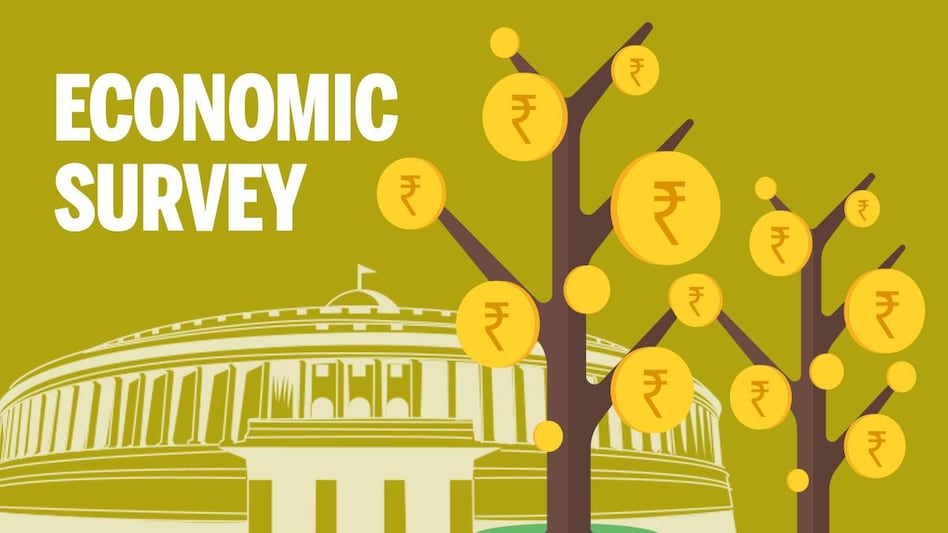Author Comments – The Delhi Income Tax Tribunal recently held that where the assessment orders are passed without mentioning the DIN number on the same then the same are liable to be quashed and cannot be upholded in accordance with the cbdt circular itself.


Income Tax Appellate Tribunal – Delhi
Gajendra Singh, Ghaziabad vs Dcit, Cc, Ghaziabad on 26 December, 2023
IN THE INCOME TAX APPELLATE TRIBUNAL
DELHI BENCH, ‘C’: NEW DELHI
BEFORE SHRI SHAMIM YAHYA, ACCOUNTANT MEMBER
AND
SHRI CHALLA NAGENDRA PRASAD, JUDICIAL MEMBER
ITA No.1554/Del/2021
(Assessment Year: 2012-13)
ITA No.1555/Del/2021
(Assessment Year: 2013-14)
ITA No.1556/Del/2021
(Assessment Year: 2014-15)
Gajendra Singh, vs. DCIT, CC,
C/o Praveen K. Agarwal & Associates, Ghaziabad.
D-17, Third Floor, RDC,
Raj Nagar,
Ghaziabad – 201 102 (Uttar Pradesh).
(PAN : BAUPS7053L)
ITA No.1498/Del/2021
(Assessment Year: 2014-15)
DCIT, CC, vs. Gajendra Singh,
Ghaziabad. Village Pavi Sadakpur Loni,
Ghaziabad – 201 102 (Uttar Pradesh).
(PAN : BAUPS7053L)
(APPELLANT) (RESPONDENT)
ASSESSEE BY : Shri Rakesh Gupta, Advocate
Shri Deepesh Garg, Advocate
REVENUE BY : Shri Waseem Arshad, CIT DR
Date of Hearing : 21.12.2023
Date of Order : 26.12.2023
ORDER
PER BENCH :
ITA Nos.1554, 1555 & 1556 /Del/2021 ITA No. 1498 /Del/2021 The aforesaid three appeals filed by the assessee are directed against the respective orders of the ld. CIT (Appeals) for the Assessment Year 2012-
13, 2013-14 & 2014-15 and the Revenue has filed cross appeal in Assessment Year 2014-15.
2. Since the issues are common & connected and the appeals were heard together, these are being consolidated and disposed off by this common order.
3. Although the assessee has raised many grounds, ld. Counsel for the assessee has pressed for additional ground which goes to the root of the validity of jurisdiction in this case. The additional ground reads as under:-
“1. That having regard to the facts and circumstances of the case, the action of Ld. AO in passing the impugned assessment order u/s 143(3)/153C dated 31.12.2019 is illegal, bad in law, inter alia for the reason that the said assessment order has been passed without DIN number as is must as held in the judgements of CIT (International Taxation) vs. Brandix Mauritius Holdings Ltd., ITA No. 163/2023, dated 20.03.2023 (Del), PCIT(E) vs. MIs Tata Medical Centre Trust, ITAT/202/2023, dated 26.09.2023 (Cal) and Ashok Commercial Enterprises vs. Asstt. CIT, WP No. 2595 of2021, dated 04.09.2023 (Bom) and CBDT Circular No.19/2019 dated 14.08.2019.
2. That in any case and in any view of the matter, the passing of impugned assessment order u/s 143(3)/153C dated 31.12.2019 is illegal, bad in law and the same is not sustainable on various legal and factual grounds. Since the above grounds of appeal are purely legal, do not require fresh facts to be investigated and go to the root of the matter, it is prayed that the same may please be admitted in view of the following judgements:
ITA Nos.1554, 1555 & 1556 /Del/2021 ITA No. 1498 /Del/2021 • CIT vs. Sinhgad Technical Education Society, (2017) 397 ITR 0344 (SC).
• NTPC Ltd. vs. CIT, (1998) 229 ITR 0383 (SC).
• VMT Spinning Co. Ltd. vs. CIT & Anr., (2016) 389 ITR 0326 (P&H).
• CIT vs. Sam Global Securities, (2014) 360 ITR 0682 (Del.).
• Siksha vs. CIT, (2011) 336 ITR 0112 (Orissa).
• Inventors Industrial Corporation Ltd. vs. CIT, (1992) 194 ITR 0548 (Born.).”
4. The AO’s order in all the cases is dated 31.12.2019. At the outset, ld. Counsel of the assessee submitted that there is no DIN mentioned in the ld. AO’s order which is contrary to the CBDT Circular No.19/2019 dated 14th August 2019. Hence, he submitted that the said AO’s order is void ab initio. He further submitted that in such a situation, jurisdiction assumed is invalid and whole proceedings are vitiated. For this, ld. Counsel of the assessee relied upon catena of case laws.
5. Ld. DR for the Revenue relied upon the orders of the authorities below but could not disprove the proposition that the order is in violation of CBDT Circular No.19/2019 dated 14.08.2019 requiring mandatory DIN. Ld. DR’s contentions in this regard are as under :-
“A – CIRCULAR 19/2019 – NOT ADDRESSED TO ASSESSEE BUT FOR INTERNAL CONTROL PURPOSES- DOES NOT CONFER ANY VESTED RIGHT ON ASSESSEE. Administrative issue not within the purview of ITAT vide section 254 of the IT Act 1961 whereas especially, the powers of the High Court and ITAT operate vide distinct spheres.
ITA Nos.1554, 1555 & 1556 /Del/2021 ITA No. 1498 /Del/2021 B- VIDE FAQ – OFFICIAL WEBSITE – EVEN A NON – DIN COMMUNICATION CAN BE VALIDATED VIDE PRESCRIBED PROCEDURE AND THERE ARE EXCEPTIONS TOO AND THEREFORE IT WOULD BE AGAINST REASON TO DRAW AN INFERENCE ON THE INTENTION OF THE DEPARTMENT AS ENUNCIATING NON DIN COMMUNICATION AS INVALID .. [The question 2,3A, INDICATE THAT IT CLARIFIES THE CIRCULAR 19 OF 2019].
C- COMMUNICATION OF ASSESSMENT ORDER AN ACT WITHIN JURISDICTION CANNOT INVALIDATE PROCEEDINGS.
D- DELHI HIGH COURT – CONSIDERED AND WAS MADE AWARE OF ONLY QUESTION 2, NOT 3,4,5- MATERIAL FACT NOT CONSIDERED, hence the judgement in Brandix cannot constitute a binding precedent.
E – FURTHER ASPECTS ON exceptions, subsequent validation and supreme court in R.K.Upadhyaya on the distinction between exercise of jurisdiction and exercise within jurisdiction NOT CONSIDERED OR ADJUDICATED BY DELHI HIGH COURT IN BRANDIX –
THEREFORE SUB SILENTIO – NOT A BINDING PRECEDENT. F- Vide ratio of Delhi High Court in SUDEV INDUSTRIES, JAGAT NOVEL EXHIBITIORS AND SUPREME COURT IN R.K.
UPADHYAYA- there is a distinction between assumption of Jurisdiction and an Exercise within Jurisdiction – An Exercise within Jurisdiction, as in a case where DIN is not mentioned in the BODY of THE order, is only an error during the course of proceedings within an Exercise within Jurisdiction and cannot INVALIDATE proceedings. G- Further the determination of the question whether DIN was later obtained, approval of CCIT sought for manual communication and whether covered by exceptions cannot be disposed of in summary proceedings since they require a determination on facts, since it becomes a mixed question of law and facts for which letter has been addressed to the Assessing authorities. In the absence of a determination of facts, ipso facto non-mention of the DIN IN THE BODY OF THE ASSEESSMENT ORDER CANNOT BE CONCLUSIVE TO INVALIDATE THE PROCEEDINGS BASED ON SUBSTANTIVE NON- COMPLIANCE OF THE CIRCULAR 19/2019.
H- The said determination, may also reveal, that although the circular19/2019 was complied with in letter and spirit, being covered by exceptions and necessary approvals, would not a mere non-mention in the body of Assessment Order be tantamount to a technical plea, and thus be saved by Sec 292B of the Income Tax Act vide Delhi High Court in Jagat Novel exhibitors and Sudev Industries ltd.
ITA Nos.1554, 1555 & 1556 /Del/2021 ITA No. 1498 /Del/2021 J That, without prejudice, an examination of administrative files and Acts does not fall within the purview of the sphere of the ITAT vide Section 254 of the IT Act 1961 and cannot be summoned or examined by the ITAT Since the ITAT is precluded upon an adjudication on administrative issues.
K During an exercise on subsequent validation mere non-appearance on the portal, would not necessarily mean or imply that SUCH A COMMUNICATION DOES NOT EXISTS AND it could be largely due to a FAILURE OF THE SYSTEM ITSELF. This ought to and should necessarily impel an inquiry into whether such a communication exists on the record or not. Mere non indication on the Portal during an exercise of validation is not determinative.
L Vide para 48 – Madras High Court in texmo (copy enclosed) para 48,too, has expressed its views that DIN cases, cannot be disposed off- on the mere non-mention of DIN -IPSO facto since the question becomes a mixed question of law and facts given the exceptions , post facto ratification and validation procedures provided and invalidation of the assessment orders was declined by the MADRAS HIGH COURT ON THE VERY SAME ASPECTS CANVASSED AND THEREFORE, AT THIS STAGE, CONSTITUTES A BINDING PRECEDENT.”
6. We have heard both the parties and perused the records. First, we consider the contents of CBDT Circular No.19/2019 dated 14.08.2019, which reads as under:-
“Circular No. 19 /2019 Government of India Ministry of Finance Department of Revenue Central Board of Direct Taxes New Delhi, dated the 14th of August, 2019 Subject: Generation/Allotment/Quoting of Document Identification Number in Notice/Order/Summons/letter/correspondence issued by the Income-tax Department – reg.
With the launch of various e-governance initiatives, income-tax Department is moving toward total computerization of its work. This has led to a significant improvement in delivery of services and has also brought greater transparency in the functioning of the tax- administration. Presently, almost all notices and orders are being generated electronically on the Income fax Business Application (ITBA) platform. However, it has been brought to the notice of ITA Nos.1554, 1555 & 1556 /Del/2021 ITA No. 1498 /Del/2021 the Central Board of Direct Taxes (the Board) that there have been some instances in which the notice, order, summons, letter and any correspondence (hereinafter referred to as “communication”) were found to have been issued manually, without maintaining a proper audit trail of such communication.
2. in order to prevent such instances and to maintain proper audit trail of all communication, the Board in exercise of power under section 119 of the income-tax Act, 1961 (hereinafter referred to as “the Act”), has decided that no communication shall be issued by any income- tax authority relating to assessment, appeals, orders, statutory or otherwise, exemptions, enquiry, investigation, verification of information, penalty, prosecution, rectification, approval etc, to the assessee or any other person, on or after the 1SI day of October, 2019 unless a computer-generated Document Identification Number (DIN) has been allotted and is duly quoted in the body of such communication.
3. In exceptional circumstances such as, —
(i) when there are technical difficulties in generating/allotting/quoting the DIN and issuance of communication electronically;, or
(ii) when communication regarding enquiry, verification etc. is required to be issued by an income-tax authority, who is outside the office, tor discharging, his Official duties: or
(iii) when due to delay in PAN migration, PAN is lying with nor.-
jurisdictional Assessing Officer; or
(iv) when PAN of assesses is not available and where a proceeding under the Act (other than verification under section 131 or section 133 of the Act) is sought to be initiated: or
(v) When the functionality to issue communication is net available in the system, the communication may be issued manually but only after recording reasons in writing in the file and with prior written approval of the Chief Commissioner / Director General of income-tax. In cases where manual communication is required to be issued due to delay in PAN migration, the proposal seeking approval for issuance of manual communication shall include the reason for delay in PAN migration. The communication issued under aforesaid circumstances shall stale the fact that the communication is issued manually without a DIN and the date of obtaining of the written approval of the Chief Commissioner / Director General of Income-Tax for issue of manual communication in the following format-
” .. This communication issues manually without a DIN on account of reason/reasons given in para 3(i)/3(ii)/3(iii)/3(iv)/3(v) of the CBDT Circular No …dated (strike off those which are not applicable) and ITA Nos.1554, 1555 & 1556 /Del/2021 ITA No. 1498 /Del/2021 with the approval of the Chief Commissioner / Director General of Income Tax vide number …. dated …. “
4. Any communication which is not in conformity with Para-2 and Para-3 above, shall be treated as invalid and shall be deemed to have never been issued.
5. The communication issued manually in the three situations specified in para 3- (i), (ii) or (iii) above shall have to be regularised within 15 working days of its issuance, by —
i. uploading the manual communication on the System. ii. compulsorily generating the DIN on the System; iii. communicating the DIN so generated to the assessee/any other person as per electronically generated pro-forma available on the System.
6. An intimation of issuance of manual communication for the reasons mentioned in para 3(v) shall be sent to the Principal Director General of Income-tax (Systems) within seven days from the date of its issuance.
7. Further, in all pending assessment proceedings, where notices were issued manually, prior to issuance of this Circular, the income-tax authorities shall identify such cases and shall upload the notices in these cases on the Systems by 31st October, 2019.
8. Hindi version to follow.
Sd/-
(Sarita Kumari) Director (ITA, II) CBDT (F. No. 225/95/2019-1TA.H) Copy to:-
i. PS to FM/OSD to FM/PS to MoS(F)/OSD to MoS(F)
ii. PS to Secretary (Revenue)
iii. Chairman, CBDT & All Members. CBDT
iv. All Pr.CCsIT/Pr.DsGIT
v. All Joint Secretaries/CslT, CBDT
vi. C&AG
vii. CIT (M&TP), Official Spokesperson of CBDT viii. O/o Pr. DGIT(Systems) for uploading on official website ix. Addl.CIT (Database Cell) for uploading on the departmental website Sd/-
(Sarita Kumari) Director (ITA, II) CBDT”
ITA Nos.1554, 1555 & 1556 /Del/2021 ITA No. 1498 /Del/2021
7. The compliance is not in accordance with the Circular. The Circular mandates that in the body of the order / communication, it has to be stated that the communication is issued manually without a DIN and the date of obtaining of the written approval of Chief Commissioner / Director General of Income-Tax for issue of manual communication in the following format :-
” .. This communication issues manually without a DIN on account of reason/reasons given in para 3(i)/3(ii)/3(iii)/3(iv)/3(v) of the CBDT Circular No …dated (strike off those which are not applicable) and with the approval of the Chief Commissioner / Director General of Income Tax vide number …. dated …. “
8. Furthermore, a reading of the aforesaid circular makes it clear that the object behind bringing the circular is for creating an audit trail. In paragraph 2, it has been very clearly mentioned that no communication shall be issued by any income-tax authority relating to assessment, appeals, orders, statutory or otherwise, exemptions, enquiry, investigation, verification of information, penalty, prosecution, rectification, approval etc. to the assessee or any other person, on or after the 1st day of October, 2019, unless a computer generated DIN has been allotted and is duly quoted in the body of such communication. Paragraph 3 of the circular carves out certain exceptions to paragraph 2 by providing that under certain exceptional circumstances, enumerated in clause (i) to (v) of paragraph 3, the communication may be issued manually but only after recording reasons in writing not only in the file and with prior written approval of the Chief ITA Nos.1554, 1555 & 1556 /Del/2021 ITA No. 1498 /Del/2021 Commissioner/Director General of Income-tax, but, the communication issued manually in such circumstances must also state the reasons why communication is issued manually without a DIN and must also mention the date and number of written approval of the Chief Commissioner/Director General of Income-tax for issuing manual communication. In fact, in paragraph 3 of the aforesaid circular, the format for recording such reasons has been specified. Paragraph 4 of the circular makes it clear that any communication issued which, is not in conformity with paragraph 2 and paragraph 3 of the circular, shall be treated as invalid and shall be deemed to have never been issued. It is fairly well settled, a circular issued u/s. 119 of the Act has statutory force and binding on subordinate authorities working under the Central Board of Direct Taxes.
9. A perusal of the AO’s order shows that it is clear in the body of AO’s order, no DIN number is mentioned nor there is any reason of not mentioning the DIN number in order of the AO. In such a situation, the AO order will lose its validity. Subsequent separate communication of DIN is a superfluous exercise. As regards, reference to the decision of Hon’ble Madras High Court by the ld. DR for the Revenue, we find that Hon’ble Supreme Court in the case of CIT v. Vegetable Products Ltd. (1973) 88 ITR 192 has held that if two views are possible one in favour of the assessee is to be adopted. In this regard, we are referring to the decision of the Hon’ble ITA Nos.1554, 1555 & 1556 /Del/2021 ITA No. 1498 /Del/2021 Delhi High Court in the case of CIT vs Brandix Mauritius Holdings Ltd. (2023)(4) TMI 579 (Delhi High Court). The Hon’ble Delhi High Court has held as under:-
“12. We have heard learned counsel for the parties. The present appeal is preferred under Section 260A of the Act. The Court’s mandate, thus, is to consider whether or not a substantial question of law arises for consideration.
12.1 As noted above, the impugned order has not been passed on merits.
13. The Tribunal has applied the plain provisions of the 2019 Circular, based on which, it has allowed the appeal preferred by the respondent/assessee.
14. The broad contours of the 2019 Circular have been adverted to by us hereinabove.
14.1 Insofar as the instant case is concerned, admittedly, the draft assessment order was passed on 30.12.2018.
15. The respondent/assessee had filed its objections qua the same, which were disposed of by the Dispute Resolution Panel [DRP] via order dated 20.09.2019.
16. The final assessment order was passed by the Assessing Officer (AO) on 15.10.2019, under Section 147/144(C)( 13)/143(3) of the Act. Concededly, the final assessment order does not bear a DIN. There is nothing on record to show that the appellant/revenue took steps to demonstrate before the Tribunal that there were exceptional circumstances, as referred to in paragraph 3 of the 2019 Circular, which would sustain the communication of the final assessment order manually, albeit, without DIN.
16.1 Given this situation, clearly paragraph 4 of the 2019 Circular would apply.
17. Paragraph 4 of the 2019 Circular, as extracted hereinabove, decidedly provides that any communication which is not in conformity with paragraph 2 and 3 shall be treated as invalid and shall be deemed to have never been issued. The phraseology of paragraph 4 of the 2019 Circular fairly puts such communication, which includes communication of assessment order, in the category of communication which are non-est in law.
17.1 It is also well established that circulars issued by the CBDT in exercise of its powers under Section 119 of the Act are binding on the” revenue.
ITA Nos.1554, 1555 & 1556 /Del/2021 ITA No. 1498 /Del/2021 17.2 The aforementioned principle stands enunciated in a long line of judgements, including the Supreme Court’s judgment rendered in K.P. Varghese v. Income Tax Officer, Ernakulam and Anr., (1981) 4 SCC
173. The relevant extracts are set forth hereafter:
“12. But the construction which is commending itself to us does not rest merely on the principle of contemporanea expositio. The two circulars of the Central Board of Direct Taxes to which we have just referred are legally binding on the Revenue and this binding character attaches to the two circulars even if they be found not in accordance with the correct interpretation of sub- section (2) and they depart or deviate from such construction. It is now well settled as a result of two decisions of this Court, one in Navnitlal C. Javeri v. K.K. Sen [AIR 1965 SC 1375 : (1965) 1 SCR 909 : 56 ITR 198] and the other in Ellerman Lines Ltd. v. CIT[(1979) 4 SCC 565] that circulars issued by the Central Board of Direct Taxes under Section 119 of the Act are binding on all officers and persons employed in the execution of the Act even if they deviate from the provisions of the Act. The question which arose in Navnitlal C. Javeri case [AIR 1965 SC 1375 : (1965) 1 SCR 909 : 56 ITR 198] was in regard to the constitutional validity of Sections 2(6-A)(e) and 12(1-B) which were introduced in the Indian Income Tax Act, 1922 by the Finance Act, 1955 with effect from April 1, 1955. These two sections provided that any payment made by a closely held company to its shareholders by way of advance or loan to the extent to which the company possesses accumulated profits shall be treated as dividend taxable under the Act and this would include any loan or advance made in any previous year relevant to any assessment year prior to Assessment Year 1955-56, if such loan or advance remained outstanding on the first day of the previous year relevant to Assessment Year 1955-56. The constitutional validity of these two sections was assailed on the ground that they imposed unreasonable restrictions on the fundamental right of the assessee under Article 19(1)(f) and (g) of the Constitution by taxing outstanding loans or advances of past years as dividend. The Revenue however relied on a circular issued by the Central Board of Revenue under Section 5(8) of the Indian Income Tax Act, 1922 which corresponded to Section 119 of the present Act and this circular provided that if any such outstanding loans or advances of past years were repaid on or before June 30, 1955, they would not be taken into account in determining the tax liability of the shareholders to whom such loans or advances were given. This circular was clearly contrary to the plain language of Section 2(6- A)(e) and Section 12(1-B), but even so this Court held that it was binding on the Revenue and since:
“past transactions which would normally have attracted the stringent provisions of Section 12(1-B) as it was introduced in 1955, were substantially granted exemption ITA Nos.1554, 1555 & 1556 /Del/2021 ITA No. 1498 /Del/2021 from the operation of the said provisions by making it clear to all the companies and their shareholders that if the past loans were genuinely refunded to the companies they would not he taken into account under Section 12(1 -B), “
Sections 2(6-A)(e) and 12(1-B) did not suffer from the vice of unconstitutionality. This decision was followed in Ellerman Lines case [(1972) 4 SCC 474 : 1974 SCC (Tax) 304 : 82 ITR 913] where referring to another circular issued by the Central Board of Revenue under Section 5(8) of the Indian Income Tax Act, 1922 on which reliance was placed on behalf of the assessee, this Court observed:
“Now, coming to the question as to the effect of instructions issued under Section 5(8) of the Act, this Court observed in Navnitlal C. Javeri v. K.K. Sen, Appellate Assistant Commissioner, Bombay [AIR 1965 SC 1375 : (1965) 1 SCR 909 : 56 ITR 198] :
‘It is clear that a circular of the kind which was issued by the Board would be binding on all officers and persons employed in the execution of the Act under Section 5(8) of the Act. This circular pointed out to all the officers that it was likely that some of the companies might have advanced loans to their shareholders as a result of genuine transactions of loans, and the idea was not to affect such transactions and not to bring them within the mischief of the new provision. ‘ The directions given in that circular clearly deviated from the provisions of the Act, yet this Court held that the circular was binding on the Income Tax Officer. “
The two circulars of the Central Board of Direct Taxes referred to above must therefore be held to be binding on the Revenue in the administration or implementation of sub-section (2) and this sub- section must be read as applicable only to cases where there is understatement of the consideration in respect of the transfer. “
[Emphasis is ours] 17.3 Also see the following observations of a coordinate bench in Back Office IT Solutions Pvt. Ltd. v. Union of India, 2021 SCC OnLine Del 2742, in the context of the impact of circulars issued by the revenue:
“24….In this context, tax administrators have to bear in mind the well- established dicta that circulars issued by the statutory authorities are binding on them, although, they cannot dictate the manner in which assessment has to be carried out in a particular case. A Circular cannot be side-stepped causing prejudice to the assessee by bringing to naught the object for which it is issued. [See: K.P. Varghese vs. Income-tax Officer 1, [1981] 7 Taxman 13 ITA Nos.1554, 1555 & 1556 /Del/2021 ITA No. 1498 /Del/2021 (SC); Also see: UCO Bank, Calcutta v. Commissioner of Income Tax, W.B., (1999) 4 SCC 599], “
18. The argument advanced on behalf the appellant/revenue, that recourse can be taken to Section 292B of the Act, is untenable, having regard to the phraseology used in paragraph 4 of the 2019 Circular.
19. The object and purpose of the issuance of the 2019 Circular, as indicated hereinabove, inter alia, was to create an audit trail. Therefore, the communication relating to assessments, appeals, orders, etcetera which find mention in paragraph 2 of the 2019 Circular, albeit without DIN, can have no standing in law, having regard to the provisions of paragraph 4 of the 2019 Circular.
20. The logical sequitur of the aforesaid reasoning can only be that the Tribunal’s decision to not sustain the final assessment order dated 15.10.2019, is a view that cannot call for our interference.
21. As noted above, in the instant appeal all that we are required to consider is whether any substantial question of law arises for consideration, which, inter alia, would require the Court to examine whether the issue is debatable or if there is an alternate view possible. Given the language employed in the 2019 Circular, there is neither any scope for debate not is there any leeway for an alternate view. 21.1 We find no error in the view adopted by the Tribunal. The Tribunal has simply applied the provisions of the 2019 Circular and thus, reached a conclusion in favour of the respondent/assessee.”
10. Thus, keeping in view the aforesaid observations of the Hon’ble Delhi High Court and in terms of paragraph 4 of the circular No. 19/2019 dated 14.08.2019, we hold that the impugned AO order is invalid and shall be deemed to have never been passed. Accordingly, we quash the impugned AO order. Further, the issue that a simultaneous DIN number was generated and communicated have been considered by Co-ordinate Bench of the Tribunal in the case of Abhimanyu Chaturvedi vs DCIT in ITA Nos.2486, 2487 and 2488/Del/2022. The relevant paragraph of this order is reproduced hereunder:-
ITA Nos.1554, 1555 & 1556 /Del/2021 ITA No. 1498 /Del/2021 ” 15.1 In this context from the aforesaid Circular no. 19/2019 it can be noted that it mandates that if the ‘communication’ is issued under aforesaid three exceptions the ‘communication’ shall state the fact that the ‘communication’ is issued manually without a DIN and the date of obtaining of the written approval of the Chief Commissioner / Director General of Income-Tax for issue of manual communication in the following format-
“……This communication issues manually without a DIN on account of reason/reasons given in para 3 (i)/3(ii)/3
(iii)/3 (iv)/3 (v) of the CBDT Circular No … dated …. (strike off those which are not applicable) and with the approval of the Chief Commissioner / Director General of Income Tax vide number ….dated .. .. “
15.2 To make it crystal clear here the words ‘Communication’ is not used to define merely the mode of transmission of the information but the circular No 19 of 2019 makes it clear by defining it in following words “However, it has been brought to the notice of the Central Boa rd of Direct Taxes (the Board) that there have been some instances in which the notice, order, summons, letter and any correspondence (hereinafter referred to as “communication”). So the assessment order itself is a communication and all compliances expected have to be specific to the assessment order.
15.3 Coming back to the assessment orders, in fact as para no. 1 to 3.1 of the assessment order dated 09.08.2021 are considered they mention that notice u/s 153A of the Act was issued through ITBA portal. Subsequent notice u/s 143(2) of the Act was also issued through ITBA Portal. Thus, the notices for the purpose of assessment were issued through ITBA Portal and if thereafter the assessment was carried out manually the assessment order should have mentioned the aforesaid fact to comply with the mandate of Circular with regard to communications issued manually.
16. Further, the Bench takes note of the instructions dated 25.10.19, which lay down that when a document is prepared outside ITBA system and uploaded manually, a DIN is required to be generated prior to uploading the document in ITBA. The instructions make it imperative that the DIN so generated has to be used for reference and quoting a document number in a physical copy. The instructions specifically provide that the user (assessing officer) should physically sign the document after quoting DIN, before uploading. Meaning thereby that generation of DIN is condition precedent for making an assessment manually or otherwise on the ITBA and then before it is uploaded on ITBA, first it should have DIN bearing on its face and then only it should be signed. Thus for the purpose of section 153A/143(3) of the Act, the assessment can be said to be ‘made’ only when the DIN is quoted on the order before it is signed. If without first generating ITA Nos.1554, 1555 & 1556 /Del/2021 ITA No. 1498 /Del/2021 the DIN and before it is quoted on the order, the order is signed, the order is non-est.
17. The Bench is of considered view that forwarding of the intimation of generation of the DIN in ITBA is only a subsequent action and that is not part of assessment order. The manner in which the word ‘communication’ is defined shows every notice, order, summons, letter and any correspondence from Tax authorities should have a DIN quoted and it is for this reason that the Intimation issued about the DIN of assessment order itself has a DIN quoted on it.
18. In the case in hand the facts coming from the assessment order when considered establish that DIN was not generated prior to uploading the document in ITBA. It is also established that the DIN was not quoted before it was physically signed by the Ld. AO. The generation of DIN subsequently and generation of intimation to be sent to assessee are of no consequence for the purpose of assessment and raising the demand.”
5. In the light of the aforesaid order, we are of the opinion that simultaneous issue of the DIN number is insignificant and superfluous exercise, in the absence of mentioning the DIN number on the body of the communication.”
11. Since, we have allowed the legal/additional ground raised by the assessee, rest of the grounds have been rendered academic and do not require adjudication.
12. In the result, appeals filed by the assessee are allowed as indicated above and the appeal of the Revenue is dismissed.
Order pronounced in the open court on this 26th day of December, 2023.
Sd/- sd/-
(CHALLA NAGENDRA PRASAD) (SHAMIM YAHYA)
JUDICIAL MEMBER ACCOUNTANT MEMBER ‘
Dated the 26th day of December, 2023
TS
ITA Nos.1554, 1555 & 1556 /Del/2021
ITA No. 1498 /Del/2021
Copy forwarded to:
1.Appellant
2.Respondent
3.CIT
4.CIT (A).
5.CIT(ITAT), New Delhi.
AR, ITAT
NEW DELHI.
















